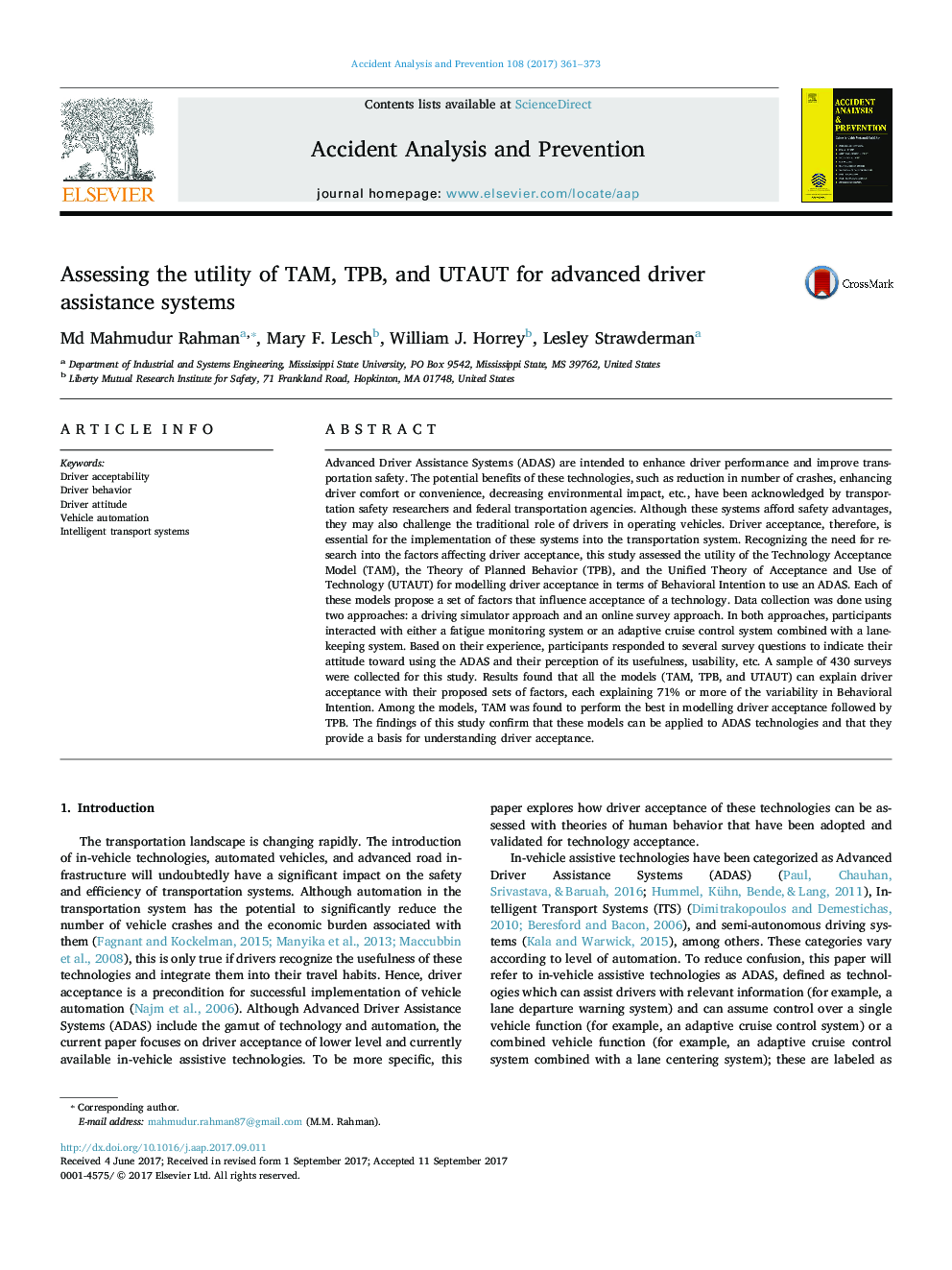| کد مقاله | کد نشریه | سال انتشار | مقاله انگلیسی | نسخه تمام متن |
|---|---|---|---|---|
| 4978538 | 1452891 | 2017 | 13 صفحه PDF | دانلود رایگان |
عنوان انگلیسی مقاله ISI
Assessing the utility of TAM, TPB, and UTAUT for advanced driver assistance systems
دانلود مقاله + سفارش ترجمه
دانلود مقاله ISI انگلیسی
رایگان برای ایرانیان
کلمات کلیدی
موضوعات مرتبط
مهندسی و علوم پایه
مهندسی شیمی
بهداشت و امنیت شیمی
پیش نمایش صفحه اول مقاله

چکیده انگلیسی
Advanced Driver Assistance Systems (ADAS) are intended to enhance driver performance and improve transportation safety. The potential benefits of these technologies, such as reduction in number of crashes, enhancing driver comfort or convenience, decreasing environmental impact, etc., have been acknowledged by transportation safety researchers and federal transportation agencies. Although these systems afford safety advantages, they may also challenge the traditional role of drivers in operating vehicles. Driver acceptance, therefore, is essential for the implementation of these systems into the transportation system. Recognizing the need for research into the factors affecting driver acceptance, this study assessed the utility of the Technology Acceptance Model (TAM), the Theory of Planned Behavior (TPB), and the Unified Theory of Acceptance and Use of Technology (UTAUT) for modelling driver acceptance in terms of Behavioral Intention to use an ADAS. Each of these models propose a set of factors that influence acceptance of a technology. Data collection was done using two approaches: a driving simulator approach and an online survey approach. In both approaches, participants interacted with either a fatigue monitoring system or an adaptive cruise control system combined with a lane-keeping system. Based on their experience, participants responded to several survey questions to indicate their attitude toward using the ADAS and their perception of its usefulness, usability, etc. A sample of 430 surveys were collected for this study. Results found that all the models (TAM, TPB, and UTAUT) can explain driver acceptance with their proposed sets of factors, each explaining 71% or more of the variability in Behavioral Intention. Among the models, TAM was found to perform the best in modelling driver acceptance followed by TPB. The findings of this study confirm that these models can be applied to ADAS technologies and that they provide a basis for understanding driver acceptance.
ناشر
Database: Elsevier - ScienceDirect (ساینس دایرکت)
Journal: Accident Analysis & Prevention - Volume 108, November 2017, Pages 361-373
Journal: Accident Analysis & Prevention - Volume 108, November 2017, Pages 361-373
نویسندگان
Md Mahmudur Rahman, Mary F. Lesch, William J. Horrey, Lesley Strawderman,